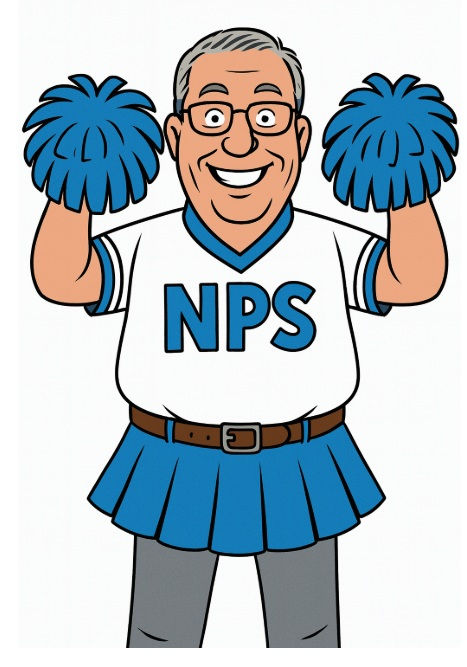The NPS Dilemma: Is It Time to Quit the Addiction?
- Michael Brandt

- Jun 16, 2023
- 4 min read
Updated: Jun 18, 2023
Introduction:
In the world of business metrics, the Net Promoter Score (NPS) has long been a popular choice for measuring customer loyalty and gauging overall satisfaction. Developed by Fred Reichheld in 2003, NPS is a simple yet powerful tool that asks customers a single question: "On a scale of 0 to 10, how likely are you to recommend our company/product/service to a friend or colleague?" Despite its widespread use, however, the utilization of NPS can increasingly be compared to an addictive habit that can lead to harmful consequences. In this blog post, we will explore what arguments speak against the use of NPS while acknowledging the continued reliance of big companies on this metric.
The Appeal of NPS:
To understand why NPS gained such popularity, we must first acknowledge its simplicity. The single-question format is easy to administer and provides a quick snapshot of customer sentiment. The score ranges from -100 to +100, categorizing respondents as "detractors" (score 0-6), "passives" (score 7-8), or "promoters" (score 9-10). By subtracting the percentage of detractors from the percentage of promoters, companies arrive at a score that seems to encapsulate customer loyalty.
The Downsides of NPS:
While NPS offers convenience, it is not without its shortcomings. Critics argue that NPS oversimplifies complex customer relationships, leading to an incomplete understanding of customer experiences. Here are some of the key criticisms:
1. Lack of Context: NPS focuses on the likelihood of recommendation without delving into the reasons behind a customer's rating. This absence of context makes it difficult to identify specific areas for improvement or understand the underlying factors affecting customer satisfaction.
2. Inadequate Measurement: NPS fails to account for nuances in customer preferences and expectations. Two customers may provide the same rating, but their underlying motivations and experiences might be vastly different. This lack of granularity limits the usefulness of NPS for actionable insights.
3. Cultural Differences: NPS is a one-size-fits-all metric that does not consider cultural variations in the way people perceive and express loyalty. A high NPS score in one country or demographic may not translate to the same level of loyalty in another.
4. Survey Fatigue and Bias: Many customers are inundated with surveys, and survey fatigue can affect response rates and the quality of the data collected. Additionally, NPS scores can be influenced by sampling bias, as customers who have strong positive or negative experiences are more likely to respond, skewing the results.
5. Insufficient Insights: One significant downside of NPS is the tendency of many companies to rely solely on the score itself (almost addiction-like) without delving deeper into the underlying reasons behind customer ratings. While the score provides a high-level overview of customer sentiment, it fails to offer the necessary insights to drive meaningful improvements. Without asking supplementary questions to understand the drivers behind the score, companies miss out on crucial information that could help identify specific pain points, uncover areas for enhancement, and drive strategic decision-making. By solely relying on the NPS score, companies risk overlooking critical nuances and valuable feedback that could lead to more targeted and effective customer experience initiatives.

The Addiction of NPS:
Despite these critiques, many big companies continue to rely on NPS. It has become deeply ingrained in their decision-making processes and often serves as a benchmark for performance evaluation. Similar to addiction, breaking away from the NPS habit can be challenging for organizations. There are several reasons why companies struggle to let go:
1. Familiarity and Comparability: NPS has been used widely for years, and many companies find comfort in the familiarity of the metric. It allows for easy benchmarking against industry competitors and historical data, despite its limitations.
2. Executive Support: NPS is frequently embraced and championed by executives who have grown accustomed to its use. The C-suite's buy-in and preference for NPS make it difficult for alternative metrics to gain traction within the organization.
3. Organizational Inertia: Large companies often face organizational inertia, making it hard to enact significant changes quickly. Replacing NPS requires substantial effort, including retraining employees, redesigning processes, and reorienting the organizational culture around a new metric.
Moving Beyond NPS:
While the addiction to NPS (particularly to the number alone) may persist, there is an increasing recognition among forward-thinking organizations and consultants that a more holistic approach is needed to understand customer sentiment accurately. Companies are exploring alternative metrics, such as customer effort score (CES), customer satisfaction score (CSAT), or sentiment analysis based on customer feedback. These metrics provide a more comprehensive view of the customer experience and allow for targeted improvements based on specific pain points.
Conclusion:
Just as many addictions have long been known to have detrimental health effects, the continued reliance on NPS as the sole measure of customer loyalty may limit a company's ability to fully understand and address customer needs and may, over time, prove detrimental to the company's health also. However, this doesn't mean that NPS should be completely abandoned. Instead, it should be adapted and integrated into a bigger, more extensive Voice of the Customer (VoC) program to provide a more holistic overview of customer sentiment.
Recognizing the limitations of NPS, organizations should incorporate supplementary questions and qualitative feedback to gain deeper insights into the drivers behind the score. By analyzing the feedback collected and taking actionable steps to address customer concerns, companies can make meaningful improvements to the customer experience.
Furthermore, NPS should be viewed as just one piece of the puzzle within a comprehensive VoC program. By utilizing multiple feedback channels, such as surveys, social media listening, and particularly customer interviews, companies can gather a diverse range of insights that paint a more accurate picture of customer perceptions.
To break free from the addictive nature of relying solely on NPS, organizations must foster a culture of continuous improvement and customer-centricity. This involves actively analyzing the drivers behind the NPS score, identifying key trends and patterns, and integrating customer feedback into decision-making processes.
In conclusion, NPS can still be a valuable metric when adapted and incorporated into a broader VoC program. By deepening the analysis of the score's drivers and expanding feedback collection efforts, companies can gain a more comprehensive understanding of customer sentiment. Breaking away from the addiction to NPS as a number only, and not a system, requires a shift in mindset and a commitment to utilizing a range of metrics and feedback sources. Embracing this approach will lead to more informed decision-making, enhanced customer satisfaction, and ultimately, long-term business success.




I wrote this comment on LinkedIn, reposting it here:
The tobacco analogy is bad. NPS addiction is not causing cancer, certainly. It is more like "essential oils", "magic crystals", "spiritual candles", "juice cleanses" or "meditation" sold as real cures. Think of it like Goop for corporations - harmless, if only wasteful. And some people definitely get rich of it, like Gwyneth Paltrow does of her feel-good merchandise. The problem is that for some companies it "delays treatment" - they fail before figuring out how to drive growth. The biggest con of the CX industry is the unfounded idea that good relationships with customers convert into profits and reduce churn. We, as humans, are wanting to see our businesses being admired…